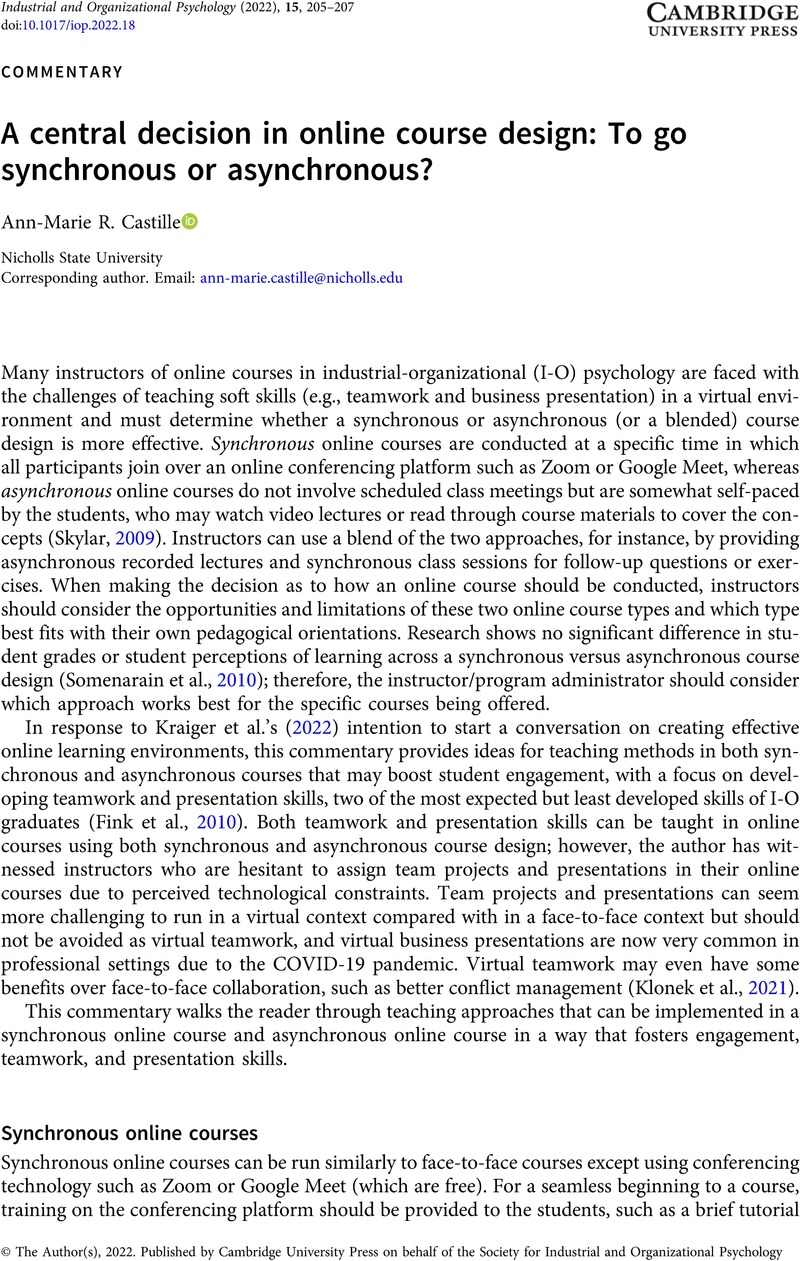Klonek, F. E.,
Kanse, L.,
Wee, S.,
Runneboom, C., &
Parker, S. K. (
2021).
Did the COVID-19 lock-down make us better at working in virtual teams? Small Group Research. Advance online publication.
https://doi.org/10.1177/10464964211008991
Google Scholar 